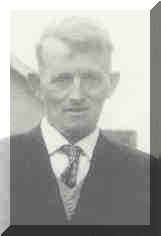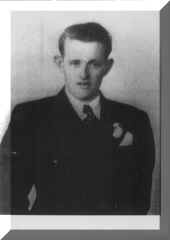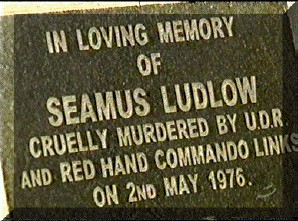The Murder of Seamus Ludlow in County Louth, May 1976. Towards a public inquiry?



The Murder of Seamus Ludlow in County Louth, May 1976. Towards a public inquiry?
|
|
Introduction to the murder of Seamus Ludlow and the official cover-up. Michael Cunningham investigation - 1978 The recent Campaign for Truth and Justice. Irish Victims Commission Report. Ludlow family's questions for the RUC (now the PSNI). Jim J. Kane's letter to the N I Human Rights Commission. Jim J. Kane's letter to the RUC Ludlow Family Letter to Bertie Ahern Other Ludlow Family Sites.
|
Saoirse Irish Freedom, March 1999: Ludlow killing: Dublin’s catalogue of shameFor over 20 years the family of Séamus Ludlow have shown remarkable courage and dignity in the face of an impassive Dublin Administration and the smear tactics of the 26-County police. Since the discovery of their loved one’s body on a lonely stretch of road in 1976, Séamus Ludlow’s relatives have been bullied and hindered in their quest for the truth surrounding his murder. A catalogue of shame emerges showing Dublin’s cover-up of British involvement in the death. Dundalk, Co Louth man Séamus Ludlow’s body was discovered by a tourist in an isolated laneway near his Mountpleasant home in May 1976. A forestry worker who lived with his mother and sister’s family, he was described as having no political inclination. On Saturday, May 1, 1976 Séamus Ludlow (47) had spent the evening drinking in various bars. Shortly after midnight he left the Lisdoo Arms and was seen outside a garage two miles away, hitching a lift home. Others were to intervene to ensure that he would not make that journey. The following morning his sister Nan Sharkey began an arduous search for her brother. At 3pm on May 2, 1976 his body was found at Culfore between Newry and Dundalk, just half a mile from his home. It has since emerged that a group of eight SAS men were spotted on the Six-County side of the Border shortly after the murder. Dublin’s collusion/cover-up began in earnest. An autopsy was carried out by Dr John Harbison who in his report concluded that Séamus Ludlow died from shock and haemorrhage as a result of bullet wounds in his heart, right lung and liver. The pathologist offered no opinion on the calibre of the bullets which killed him. At the inquest into the death of the Dundalk bachelor held on August 19, 1976 no account as to the calibre or origin of the bullets was given. No mention was made of RUC intelligence supplied to the Gardaí implicating a British army unity (UDR) or loyalist death squad. No mention was made of the SAS unit known to have been in the vicinity a short distance away. And significantly the family were not contacted in time to attend the hearing. Relatives have claimed that the British army took a special interest in the family soon after the killing. The day after Séamus Ludlow’s funeral, a British army patrol called to the home of his brother-in-law Kevin Donegan, he was informed that they had been sent by the British colonial police (RUC) to find out about the line of inquiry being pursued by the Gardaí. Kevin Donegan refused to speak to them but later went to Forkhill barracks to talk to the RUC. However no members of the RUC were present, only British army personnel. He was airlifted to Bessbrook army base where a British officer interrogated him for over an hour on Garda inquiries. The family have stated that no member of the RUC has ever questioned the family about the case or shown any interest in it. At a public meeting held in Dundalk on February 18, the family accused 26-County authorities of a cover-up to hide British complicity in the murder. The family claimed one of Séamus Ludlow’s killers was a notorious figure in the British-instigated death squad the Red Hand Commando )a UVF title of convenience), who openly boasted of his role in a string of killings including the assassination of Republican Sinn Féin Vice-President Máire Drumm in a Belfast hospital in October 1976. Relatives have renewed their demand for an independent public inquiry. Ludlow’s nephew, Jimmy Sharkey, expressing frustration at the suppression of information surrounding his uncle’s death said: “We are calling on the [Dublin] government to open an independent public inquiry. We feel as a family that this is the only way we are going to be told the truth. “For 23 years we have been told it was the IRA [who killed Ludlow] but they always had all the information including who killed him. They have suppressed this evidence and I think one of the reasons for this is that one of the men in the car was an agent or informer.” The family have accused the Gardaí of conducting a persistent and orchestrated smear campaign against the dead man by claiming he was executed by the IRA for being an informer. Not only were the 26-County authorities secretly filing away evidence of British Crown Forces involvement in the murder but in order to ensure the relatives would not detect signs of a cover-up and Dublin collusion into the events surrounding the death of the Dundalk bachelor, 26-County police did their utmost to split the family apart. The rumour was spread by both the 26-County police in Dundalk and the investigating murder squad in Dublin that Séamus was an informer. Two family members were told separately and by different members of the 26-County police that not only was Séamus killed by the IRA but that other family members had known about the planned killing beforehand. Séamus Ludlow’s brother-in-law, Kevin Donegan (now deceased), contacted the 26-County police on a number of occasions after the murder to find out the progress of the investigation. According to his son Michael Donegan, he was consistently told that Séamus Ludlow had been killed by the IRA and that members of his family had colluded with them. Early last year an eyewitness to the slaying told how members of the British army’s Ulster Defence Regiment (now the RIR) had driven across the Border from the Six Counties and were allowed free access through checkpoints by sharing their UDR passes. The eyewitness Paul Hoskins revealed that he had been drinking in a Comber, Co Down bar with a few friends. By choice, he met up with three other men who he knew socially. These three were known to be members of the Red Hand Commando, two of whom were also members of the British army (UDR). One was a captain in the UDR, the second was also an officer. The third man was from Bangor and was nicknamed “Mambo”. He noticed the soldiers were armed. Paul Hoskins together with the three men moved to another pub. They drove the second UDR officer’s car, a two-door yellow Datsun. According to Hoskins the pub was so quiet that the UDR captain approached him with a suggestion. He “mentioned that there were supposed to be IRA checks along the Border. It was information obviously from the UDR that they were doing something on the Border. He said do you fancy going down to spy on them? I say yes, it was like an adventure.” They left and drove to another pub in Omeath having been waved through a permanent British army checkpoint after the driver showed his UDR pass. It was after closing time when they left the pub, Paul Hoskins said that by this time he was quite drunk, as he had consumed about ten pints. They then drove across the Border into Dundalk where they noticed a man thumbing a lift. The car stopped and the man was invited to sit in the back. After a short while the man pointed out to them where he lived. According to Hoskins: “We went on down anyway and I remember him reversing up a wee lane. Mambo got out and pulled the seat back and I got out.” Hoskins said he went to a hedge to go to the toilet. Suddenly he heard bangs. “I swung round and there was this guy Mambo sort of half in the car and he was shooting in the car. All I remember then is your man [Mambo] pulling him out and another pushing him out.” Having got the body out of the vehicle, the assailants then dumped it on the side of the lane. Paul Hoskins said he was horrified. Mambo shouted “get in” and the car sped back towards the Border. “I was horrified. I got in the back and the whole way I just stared out the window. “The car dropped Hoskins to his home in Comber. He said he was threatened by Mambo who told him if he could get away with it he would kill a Protestant too. Two days later the UDR captain warned him that unless he joined the Red Hand he would be killed because of what he had seen. He asked the UDA to
intervene on his behalf. After this he did not hear about the murder of Séamus
Ludlow until 11 years later.
I Homepage I I Top I I Barron Inquiry I I Terms of reference for Barron Inquiry I
Last Edited : 09 June 2002 Copyright
© 2002 the Ludlow family. All rights reserved.
|